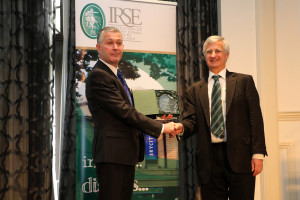Is it really signalling?
Railway Signalling advances, but not very quickly.
One of the early papers to the IRSE, presented in 1914, was about a method for using sequences of colour lights to signal trains, simplifying the forests of mechanical two position signals typically needed at major British Interlockings at that time. Within a mere 10 years the IRSE had set up a committee to investigate the matter further; eventually there emerged British 4 aspect signalling.
From that time colour light signalling swept the world at such speed that the last fully mechanical interlocking (2 position signals) to be commissioned new into suburban Melbourne was in 1966, a mere 42 years later. I was on the commissioning in 1982 which removed the mechanical signalling (complete with kerosene lamps) from Flinders St Station. We demonstrate constantly that signalling equipment is built to last 50 years. What we hear less of is that it takes 50 years after the introduction of a new signalling paradigm before Signal Engineers are really comfortable to adopt it unreservedly.
It is interesting to reflect that the paper presented in 1914 was not presenting any new principles; it was reporting on then current practice in railways outside Britain – the Pennsylvania railway in the US in this case. Discussions in IRSE papers of the time presented the benefits and practical applications of new (or introduced) technology. They did not attempt to establish the theoretical underpinning for any of that new signalling.
“If continuous Track Circuit is installed, then the present Block System, with its codes, rules, instruments, and confusion, can be swept away” said A.F. Bound in his 1915 paper. Just so (when supported by appropriate principles), but the same technology could also be used as a band aid to prop up the same “existing discredited Block System” (this being the period immediately post Quintinshill) he talked about in his paper.
We hear this same talk today of applying new technology to sweep aside vast swathes of existing signalling. We are perhaps privileged to be part of the generation which will oversee the demise of those same “lights on sticks” reported on in the paper from 1914.
The technologies are exciting. How important are theoretical underpinnings really?
Looking at another discipline, it is 80 years since a young mathematician names Alan Turing invented the modern computer in a paper with the unexciting title “On Computable Numbers, With an Application to the Entscheidungsproblem”. Going against him, apart from the title (boring and topic entirely theoretical), was that the purpose of the paper was to show that an important part of the life’s work of one of the giants of 20th century mathematics (David Hilbert) was wrong – built on an illusion.
There, straight away, are two reasons why such a paper would not be found presented at an IRSE technical meeting. So it was perhaps fortunate for Alan Turing (as well as for us as beneficiaries of his legacy) that his field was mathematics and not railway signal engineering.
“But didn’t Babbage invent the computer?” I hear you say. Babbage invented the difference engine and built a few of them. His technology was a bit dated by 1935. What Alan Turing invented was the theoretical foundation on which is built all modern computers regardless of technology.
The photo with this blog is of me presenting a theoretical paper to the Adelaide IRSE meeting in April this year. Interesting paper (perhaps a little boring actually) I hear people say, but is it really signalling?
What is signalling? Is it just a bunch of technologies? Is it more than that? What is a computer? Is it that thing that sits on your desk (or as likely: in your pocket) or is it also that thing Alan Turing came up with 80 years ago (an abstract idea) without which none of what followed could have happened.
I will be presenting another slightly abstract, possibly (a bit) boring technical paper at the IRSE technical meeting in Perth this week. Come and listen to the boundaries of railway signalling being pushed in a safe environment.
- Categories
- Engineer technical
- Signal technical
admin


